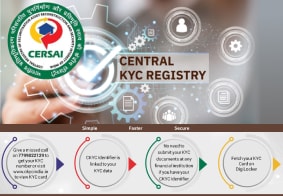CKYC Registry
-
Customer Service Contact us Service request Locate a branch
Find all the help you need
Scan the QR, get our app, and find help on your fingertips

Help CenterSupport topics, Contact us, FAQs and more
-
Login
Are you ready for an upgrade?
Login to the new experience with best features and services
-
Login
Are you ready for an upgrade?
Login to the new experience with best features and services
- Accounts
-
Deposits
IDFC FIRST Bank Deposits
View all Deposits -
Loans
IDFC FIRST Bank Loans
View all Loans - Wealth & Insure
-
Payments
IDFC FIRST Bank Payments
View all Payments -
Cards
IDFC FIRST Bank Cards
View all Cards - Blogs
- Corporate Account
-
Cash Management Services
IDFC FIRST Bank Cash Management Services
View all Cash Management Services - Supply Chain Finance
-
Corporate Lending
IDFC FIRST Bank Lending
View all -
Treasury
IDFC FIRST Bank Treasury
See more details - NBFC Financing
Support topics, Contact us, FAQs and more
- IDFC FIRST Bank Accounts
-
Savings Account
-
Corporate Salary
Account -
Senior Citizens
Savings Account -
First Power
Account -
Current Account
-
NRI Savings
Account -
TASC Institutional
Account -
Savings Account
Interest Calculator
- IDFC FIRST Bank Deposits
-
Fixed Deposit
-
Recurring Deposit
-
NRI Fixed Deposit
-
Safe Deposit Locker
-
FD Calculator
-
RD Calculator
- IDFC FIRST Bank Loans
-
Personal Loan
-
Consumer Durable
Loan -
Home Loan
-
Business Loan
-
Professional Loan
-
Education Loan
-
New Car Loan
-
Pre-owned Car Loan
-
Two Wheeler Loan
-
Pre-owned Two
Wheeler Loan -
Commercial Vehicle
Loan -
Gold Loan
-
Loan Against Property
-
Loan Against Securities
-
Easy Buy EMI card
-
Personal Loan
EMI Calculator -
Education Loan
EMI Calculator -
Home Loan
EMI Calculator
- IDFC FIRST Bank Wealth & Insure
-
FIRST Select
-
FIRST Wealth
-
FIRST Private
-
Mutual Funds
-
Sovereign Gold Bond
-
Demat Account
-
Term Insurance
-
Life Insurance
-
Health Insurance
-
General Insurance
-
Bonds
-
Loan Against
Securities -
Portfolio Management
Service
- IDFC FIRST Bank Payments
-
FASTag
-
Credit Card
Bill Payments -
UPI
-
Funds Transfer
-
Forex Services
-
Pay Loan EMI
- IDFC FIRST Bank Cards
-
Ashva :
Metal Credit Card -
Mayura :
Metal Credit Card -
FIRST Millennia
Credit Card -
FIRST Classic
Credit Card -
FIRST Select
Credit Card -
FIRST Wealth
Credit Card -
FIRST WOW!
Credit Card -
Deals
-
Debit Cards
-
Co-branded Cards
-
Credit Card
EMI Calculator -
FIRST Corporate
Credit Card -
FIRST Purchase
Credit Card -
FIRST Business
Credit Card
- Premium Metal Credit Cards
-
AshvaLifestyle1% Forex₹2,999
-
MayuraLifestyleZero Forex₹5,999
-
FIRST PrivateInvite Only
- Best for travellers
-
MayuraZero ForexMetal₹5,999
-
Ashva1% ForexMetal₹2,999
-
FIRST WOW!Zero ForexTravelLifetime Free
-
FIRST SWYPTravel OffersEMI₹499
-
FIRST Select1.99% ForexLifestyleLifetime Free
-
FIRST Wealth1.5% ForexLifestyleLifetime Free
-
Club VistaraTravelLifestyle₹4,999
-
IndiGo IDFC FIRST Dual Credit CardTravelLifestyle₹4,999
- Max benefits, Free for life
-
FIRST Classic10X RewardsShoppingNever Expiring Rewards
-
FIRST Millennia10X RewardsShoppingNever Expiring Rewards
-
FIRST Select10X RewardsLifestyle1.99% Forex
-
FIRST Wealth10X RewardsLifestyle1.5% Forex
-
FIRST WOW!RewardsTravelZero Forex
-
LIC ClassicRewardsInsuranceShopping
-
LIC SelectRewardsInsuranceShopping
- Reward Multipliers
-
AshvaLifestyleMetal₹2,999
-
MayuraLifestyleZero Forex₹5,999
-
FIRST ClassicNever Expiring RewardsShoppingLifetime Free
-
FIRST MillenniaNever Expiring RewardsShoppingLifetime Free
-
FIRST SelectNever Expiring RewardsLifestyleLifetime Free
-
FIRST WealthNever Expiring RewardsLifestyleLifetime Free
- Rewards & Credit on UPI
-
FIRST Power+FuelUPI₹499
-
FIRST PowerFuelUPI₹199
-
FIRST EA₹NVirtual1% Cashback₹499
-
FIRST DigitalVirtualUPI₹199
-
IndiGo IDFC FIRST Dual Credit CardUPITravelDual cards
- Fuel and Savings
-
FIRST PowerRewardsUPI₹199
-
FIRST Power+RewardsUPI₹499
-
LIC ClassicRewardsInsuranceShopping
-
LIC SelectRewardsInsuranceShopping
- Express and Flaunt
-
AshvaMetal1% Forex₹2,999
-
MayuraMetalZero Forex₹5,999
-
FIRST SWYPEMIOfferMAX₹499
-
FIRST MillenniaRewardsShoppingLifetime Free
- FD Backed rewarding Credit Cards for all
-
FIRST EA₹NVirtualCashback₹499
-
FIRST WOW!Zero ForexTravelLifetime Free
-
CreditPro Balance TransferTransfer & SaveReduce InterestPay Smartly
- IDFC FIRST Bank NRI Forex Solutions
-
Send money to India-Wire transfer
-
Send money to India-Digitally
-
Send money abroad
-
Max Returns FD (INR)
- IDFC FIRST Bank MSME Accounts
-
Platinum Current
Account -
Gold
Current Account -
Silver Plus
Current Account -
Merchant Multiplier
Account -
Agri Multiplier
Account -
TASC Institutional
Account -
Dynamic Current
Account -
World business
Account -
First Startup
Current Account
- IDFC FIRST Bank Business Loans
-
Business Loan
-
Professional Loan
-
Loan Against Property
-
Business Loan for Women
-
Working Capital Loan
-
Construction Equipment Loan
-
Machinery Loan
-
Healthcare Equipment Loan
- IDFC FIRST Bank Business Solutions
-
Payment Solutions
-
Tax Payments
-
Doorstep Banking
-
Point of Sale (POS)
-
Escrow Accounts
-
NACH
-
Payment Gateway
-
UPI
-
Virtual Accounts
-
As per amendment in the Income Tax Rules, PAN or Aadhaar are to be mandatorily quoted for cash deposit or withdrawal aggregating to Rupees twenty lakhs or more in a FY. Please update your PAN or Aadhaar. Kindly reach out to the Bank’s contact center on 1800 10 888 or visit the nearest IDFC FIRST Bank branch for further queries.
-
-
Most Searched
Sorry!
We couldn’t find ‘’ in our website
Here is what you can do :
- Try checking the spelling and search
- Search from below suggestions instead
- Widen your search & try a more generic keyword
Suggested
Get a Credit Card
Enjoy Zero Charges on All Commonly Used Savings Account Services
Open Account Now
Finance
How to spot the most common UPI fraud red flags
Key Takeaways
The rapid rise of UPI has also given rise to numerous UPI fraud cases.
Fraudsters manipulate users in various ways to carry out these UPI hacks
Monitoring transactions, protecting sensitive UPI information and choosing a safe UPI app are important
IDFC FIRST Bank Mobile App provides a safe and secure UPI experience, with advanced fraud detection mechanisms
As of October 1, 2025, banks and payment apps will no longer be able to send peer-to-peer (P2P) collect requests via the Unified Payments Interface (UPI). This decision by the National Payment Corporation of India (NPCI) is the latest in a series of measures aimed at combating UPI fraud.
Industry watchers expect that the removal of this high-risk cash flow channel will reduce UPI fraud instances. While this is just one example, UPI scams have consistently created a nuisance for regulators and, at times, caused losses for users.
Before we proceed, let us understand what UPI fraud essentially means.
READ MORE
What is UPI fraud, and how does it happen?
UPI fraud can be any fraudulent activity that can be linked to UPI-based digital transactions. As a fast and convenient mode of mobile phone-based money transfer, UPI has gained immense popularity in India. This has often made it and its users a target of UPI hacks and mischiefs, leading to a rise in UPI complaints.
People who execute UPI fraud employ different tricks and tactics. It may be a random call from a supposed bank representative, a call asking for verification questions, mirroring the user’s UPI account, false claims about UPI-related technical difficulties and so on.
Reasons for UPI fraud in India
There are several key factors that are often cited as the causes of UPI fraud in India. These include:
· Rapid adoption: There is a concern that the rapid adoption of UPI has created a mass user population that is not well-versed in fraud. User training and securing payments need to be in sync with the adoption rate.
· User manipulation: Manipulation tactics like urgency and fear are exploited by scammers. They lead users to approve fraudulent UPI transactions without allowing them the time to check the details for authenticity.
· Advanced techniques: While NPCI is using technological sophistication in UPI, the scammers are trying to catch up to it. They are now using advanced technologies like AI and deepfakes to weave more authentic-looking scams.
· Training issues: Many users are not up to date with the latest fraud tactics. Users should be aware of the dos and don’ts of UPI usage.
· Inadequate security: Negligence of mobile security also leads to UPI fraud and malpractices. This happens as their UPI account remains unprotected and vulnerable to threats.
· UPI collect feature: While this is being addressed, fraudsters have been using UPI’s collect feature to send deceptive payment requests to users.
Types of UPI fraud in India
UPI fraud in India can happen in many ways. However, these scams often share certain common patterns that can be used to identify when a fraud is occurring. Some of the most common types of UPI fraud in India include:
· Fake UPI transactions
Scammers redirect users to fraudulent apps or phishing websites by making them believe that they are conducting a genuine UPI transaction. The app or website then steals the UPI account credentials.
Scammers also share fake payment screenshots with users to make them believe that an authentic transaction has been made.
· Vishing
In this scam, fraudsters pretend to be bank representatives and ask for sensitive account details. Once they get hold of information like UPI PINs, passwords, and trick users into revealing sensitive details like UPI PINs and passwords.
· Misrepresentation
Scammers may also disguise themselves as bankers, customer service personnel, etc., to obtain UPI PINs or OTPs from users.
· Phishing
It is a common tactic where scammers entice users to fake websites through deceptive emails, only for the users to share their credentials on the website. The users should always ensure that it is safe to share their UPI ID.
· Malware
Malicious software, also known as malware, gets downloaded when users access fake links or attachments. The malware then gathers UPI and banking information from the person’s computer or mobile phone.
· Screen monitoring apps
These are fraudulent apps that can discreetly record the activities on the user’s screen. Through these recordings, vital UPI information is captured.
· SIM cloning
Another alarming malpractice is the cloning of a user’s SIM by fraudsters. They use the clone SIM to illegally access and use the user account.
· Fake UPI handles
These handles are used by fraudsters to display offers and fake payment requests. It serves as bait to attract UPI users.
· Money mule
This involves elaborate fraud rackets that use the PI user’s account as an intermediary, hiding money laundering. The UPI user’s account is used as a money mule by routing transactions through it.
· Remittance fee scams
Fraudsters mislead users by claiming that inward or outward remittances in foreign or domestic currency require an additional fee to be paid via UPI. Victims are asked to transfer this so-called “processing” or “clearance” charge to release or complete the transaction, but the remittance itself is either fake or never arrives.
· Collect requests
Fraudsters use UPI collect requests to process refunds or obtain payment authorisations.
Avoiding UPI fraud
Given the plethora of threats floating around in cyberspace, it would only be wise to know how to avoid these threats. Some of the ways you can avoid UPI fraud attempts are –
· Protecting the account: To start with, make sure that you set a strong UPI PIN. Besides, always keep your phone locked and set a strong screen lock as well.
· UPI alerts: Most UPI apps have in-built spam alerts. Users should pay attention to such notifications before making the payment or accepting payment requests.
· Exercising caution in interactions: When interacting with unknown callers and messages, users should be cautious not to reveal any sensitive information.
· Avoiding malicious applications: The user should not download apps from unverified sources. Only apps with positive reviews and from trusted app stores should be downloaded.
· Avoiding links: Users must not click on suspicious links, whether in text messages or emails. These links can lead them to fraudulent sites or compromise their UPI account in any other way.
· Know the basics: You should be aware of the fraud addressal process, and other terms and conditions related to UPI. It is also useful to know how to get money back from UPI fraud.
· Monitor bank communication: Banks send notification messages for transactions made in the linked bank account. If you notice any suspicious activity, like password changes and payments, you should know how to block UPI transactions.
Apart from monitoring the bank notifications, it is also important that you choose a reliable bank for your UPI app.
Secure banking practices
IDFC FIRST Bank offers a safe and smooth UPI experience with its mobile banking app. Using the IDFC FIRST Bank Mobile Banking App means that your UPI transactions are protected with fraud detection mechanisms and multi-layer authentication.
The app seamlessly integrates with your savings account and ensures fast and safe UPI transactions. UPI ID is verified in every transaction with the IDFC FIRST Bank Mobile Banking App. Real-time fraud monitoring by IDFC FIRST Bank ensures early detection of fraudulent activities.
Being UPI safe
Scammers are always busy coming up with new tricks to commit UPI fraud. Users, on their part, need to be cautious and thwart any such malicious attempts. Apart from the caution and attention, choosing the right banking partner can further protect you from UPI fraud. Choose the IDFC FIRST Bank Mobile Banking App to get the finest UPI experience today.
Frequently Asked Questions
Is it safe to share my UPI ID with others?
Yes, sharing only your UPI ID (like an email ID) is generally safe, but never share your UPI PIN or OTP. Fraudsters often trick people into thinking both are the same.
Can someone hack my UPI account without knowing my PIN?
No, transactions require your UPI PIN. However, hackers may use malware, phishing links, or SIM cloning to trick you into giving away the PIN indirectly.
How do I raise a UPI complaint if I face fraud?
You can lodge a complaint directly in your UPI app under the “Help” or “Raise complaint” section. If unresolved, escalate it to your bank or use the NPCI complaint portal.
Disclaimer
The contents of this article/infographic/picture/video are meant solely for information purposes. The contents are generic in nature and for informational purposes only. It is not a substitute for specific advice in your own circumstances. The information is subject to updation, completion, revision, verification and amendment and the same may change materially. The information is not intended for distribution or use by any person in any jurisdiction where such distribution or use would be contrary to law or regulation or would subject IDFC FIRST Bank or its affiliates to any licensing or registration requirements. IDFC FIRST Bank shall not be responsible for any direct/indirect loss or liability incurred by the reader for taking any financial decisions based on the contents and information mentioned. Please consult your financial advisor before making any financial decision.
The features, benefits and offers mentioned in the article are applicable as on the day of publication of this blog and is subject to change without notice. The contents herein are also subject to other product specific terms and conditions and any third party terms and conditions, as applicable. Please refer our website www.idfcfirstbank.com for latest updates.























